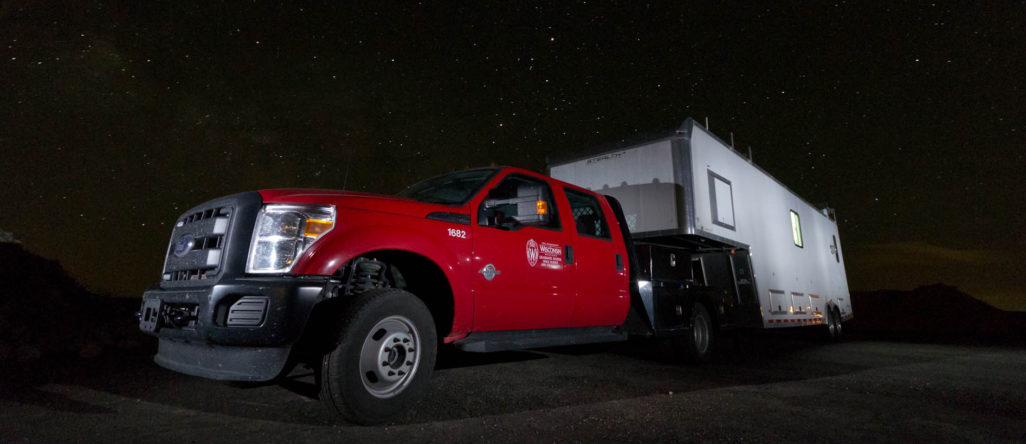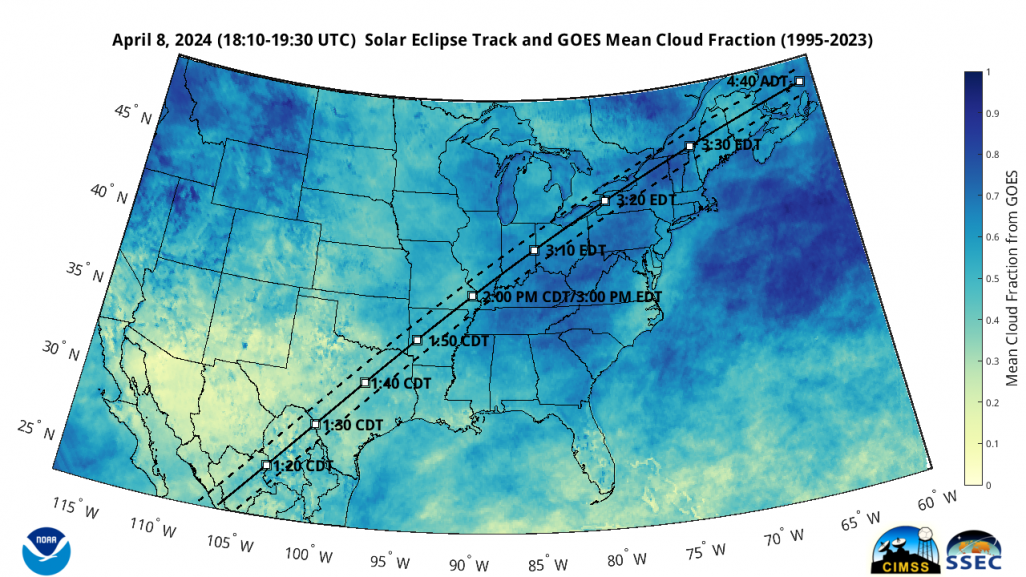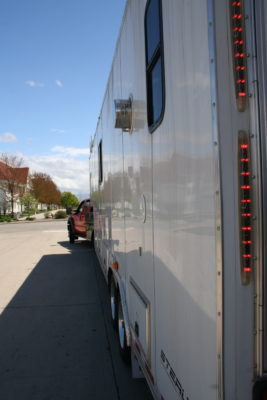SPARC on the go — SSEC mobile research lab embarks on new field campaigns
A midday blackout and strong coastal winds — that is what is in store for the SPARC research trailer as it embarks on two upcoming field campaigns that will take the laboratory and its team around the Midwest to collect atmospheric data.
The SSEC Portable Atmospheric Research Center is a mobile research lab that has travelled thousands of kilometers across the US to collect valuable atmospheric data for more than seven field campaigns since 2014. In 2022 the SPARC became part of the National Science Foundation’s Community Instrument Facilities that serves as a way for university researchers and partners around the US to submit proposals to utilize the SPARC’s capabilities for their field campaigns.

Eclipse 2024
On April 08, 2024, North America and much of the continental US will experience a total solar eclipse as its spans from Texas to Maine. The SPARC will setup within the path of totality near Indianapolis, Indiana with the goal to collect data during the blackout, which presents peculiar atmospheric conditions.
“It’s basically a sunset at the wrong time and it happens quickly,” says Jonathan Gero, an SSEC scientist who operates the SPARC. “What you’re getting are interesting changes in how the Earth is heated from the Sun, that short absence can have noticeable impacts on the atmosphere.”

Credit: Mat Gunshor
Gero and his team have partnered with Valparaiso University who are leading the campaign to collect information from inside the path of totality. Together the project aims to educate undergraduate students on Earth’s planetary boundary layer.
According to Gero, the last total solar eclipse that occurred in 2017 brought interesting changes to the boundary layer and how clouds formed.
“It’s a neat one-off experiment to see how solar radiation affects clouds,” says Gero. “There’s no other way to run that experiment any other time.”
Great Lakes, great winds

The second field campaign of 2024 will take place along the Lake Michigan shoreline in Milwaukee, Wisconsin. The study is led by the University of Wisconsin-Milwaukee and is called “Learning by Doing: Observing the Lake Michigan Lake-Breeze Circulation” and is geared toward giving undergraduate students hands on experience collecting atmospheric data about Lake Michigan’s famed lake breezes.
“It’s a local phenomenon and if you live in Milwaukee you’re familiar with how the lake can influence your weather, sometimes very quickly,” says Gero.
Strong winds blowing out toward Lake Michigan or inward toward Milwaukee have been known to change weather conditions rapidly, as was seen in May of 2023 when a “Pneumonia Front” in-part caused a significant drop in air temperatures across southeast Wisconsin. Within 45 minutes, some local temperatures dropped from 27 degrees Celsius (80 F) to 13 C (55 F).
To help study the impacts of lake breezes, the SPARC will deploy its Atmospheric Emitted Radiance Interferometer (or AERI) instrument to measure boundary layer structures while a Doppler lidar will use a laser to track winds and map out the lake breezes. Lastly, the High Spectral Resolution Lidar can map out atmospheric pollutants. This will happen in tandem with the UW-Milwaukee who will also collect atmospheric information using weather balloons launched from a ship in Lake Michigan. Together the campaign will piece together a complete picture of the conditions and forces at play for these famed lake breezes and their weather impacts.
This work is supported by the National Science Foundation.
